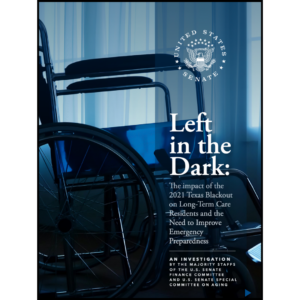6 scooter dangers and how to address them
As scooters become more common in senior living environments, so do provider concerns related to safety and legal issues.
Cory Kallheim, JD, vice president of legal affairs for LeadingAge, said he fields questions about the mobility devices every day from members. The bottom line: “You can’t discriminate between those folks who need motorized devices [including motorized wheelchairs] versus those who don’t.”
What else can’t you do, and what can you do? Kallheim shared six potential sticking points with those attending a legal issues forum at the organization’s recent annual meeting:
- Don’t require residents with motorized vehicles to live on the first floor.
- Don’t charge a premium on rent for residents who want to have a scooter or motorized wheelchair in your community. “This does not mean that you can’t charge them for the damage that they create,” Kallheim said. “It’s a subtle distinction, but you can’t charge them upfront for having [a mobility device] and thinking that they’re going to cause more damage than they might actually do. But if they do cause damage…they’re responsible for that” as long as your contracts contain wording to that effect.
- Don’t require additional liability insurance from those who have motorized vehicles, “because you’re requiring that of them as one specific class versus everybody else.”
- Don’t request medical screenings or medical records of residents or prospective residents who wish to have motorized vehicles. “You can certainly ask if they need it and if they’ve gone through some training,” Kallheim said, and if an incident occurs, it’s acceptable for the community to evaluate a resident’s ability to operate the device. Some communities, he added, offer annual training to all residents to ensure that they know how to operate their motorized vehicles safely.
- Don’t restrict access to common areas. It is permissible, however, to require residents using motorized vehicles to obey community rules related to speed, right-of-way, who may use an individual resident’s device, and storage, parking and recharging of the device, Kallheim said.
- Don’t have a policy that bans motorized vehicles outright. “The whole idea is to have access for everybody to the community, so when you have a policy like that, that’s pretty discriminatory right off the bat,” Kallheim said. “So I would have just a general policy of allowing folks to have mobility devices.” Those communities that have policies banning the devices should try to honor the reasonable accommodation requests of residents asking to have such vehicles, he said. “You have to take each request as it comes,” he said.
As always, seek counsel regarding your specific situation.
Related Articles
Topics: Articles , Risk Management











